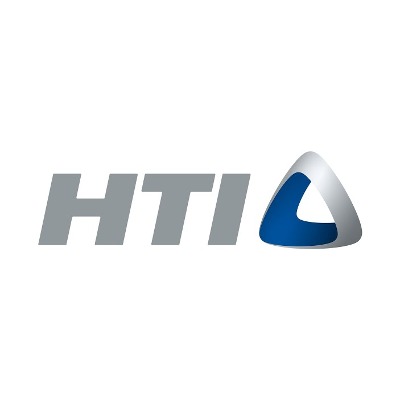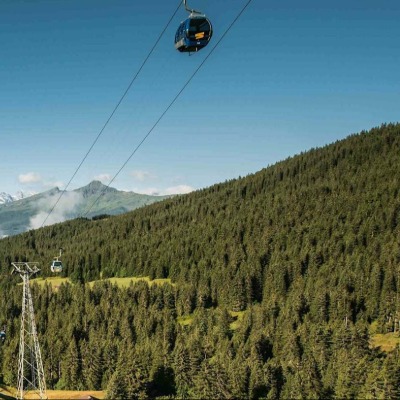Arizona Snowbowl Shares Vision For Future

On the heels of the longest ski season in history, and answering the Forest Service’s call to utilize existing mountain resort infrastructure as a portal to the National Forest to satisfy growing recreational demand, Arizona Snowbowl is sharing its vision for the future. The Flagstaff mountain resort is seeking to enhance the existing guest experience, meet current demand and provide year-round outdoor recreation activities and benefit the community with additional partnerships and a greater economic impact.
“Our job, as I see it, is to make sure that people take home the memories they come for,” said retired Forest Service Chief Tom Tidwell. “That includes furnishing the services they need—the roads, the slopes, the facilities, and everything else. It should include using the infrastructure of ski areas to help meet recreational demand year-round.”
Arizona Snowbowl, operating on 777 acres of public land since 1938 under a Forest Service permit, is crafting its new Master Development Plan addressing improvements within the existing boundaries of the mountain resort, as required by the Special Use Permit issued by the Coconino National Forest. The current plan, which included snowmaking, was approved in 2005 and is near completion. Facilities, Infrastructure A third-party analysis completed by SE Group, a leading mountain resort consulting firm, determined the comfortable carrying capacity at Snowbowl is currently 3,870 visitors per day; however, guest services, dining expectations and parking facilities are deficient. “It’s not uncommon for guests to experience long food lines, a lack of seating in the lodges and insufficient restrooms,” said General Manager J.R. Murray. “We, too, want our guests to go home with fond memories of their time on the mountain. In order to achieve this, we are planning for a capacity of 4,500 people to provide a great experience on even the busiest holidays.”
As a result, Mountain Capital Partners, the Snowbowl management group, is conceptualizing new facilities and infrastructure within the resort’s boundaries: increasing space for guest services (including food & beverage, ticketing, rentals, lessons, retail) on-mountain plus additional space within the base area, adding parking for cars and buses, and a small medical clinic in the winter.
Winter Lifts, Trail Enhancements Plans also include two new chairlifts serving beginner and intermediate skiers, and five additional trails accessible to snowmaking operations. Snowbowl, where Arizona learns to ski, boasts the largest beginner terrain in the Southwest, which includes the state-of-the art Terrain Based Learning program and conveyor lifts. The mountain resort has a growing Adaptive Snowsports Program, plus discounts for veterans and those serving in active duty. In addition, full-price lift tickets come with three free lessons.
“It’s no secret that we’re passionate about creating skiers and making the sport accessible to everyone,” says Managing Partner James Coleman of Mountain Capital Partners. “We are guided by our mission ‘Skiing First’ and are committed to keeping winter a top priority. I’m confident the proposed improvements will enhance the experience for expert and beginner skiers alike.”
As part of Coleman’s commitment to making skiing affordable, Snowbowl will also continue to offer Power Kids, a free season pass for children ages 10 and younger. No parent purchase is required, and this pass is valid every day of the 2019/2020 season.
Night Skiing; Winter Tubing To provide safe, managed snow play activities, Snowbowl has identified the opportunity to provide a winter tubing facility on its lower, western slope. In addition, the mountain resort will be working with the Flagstaff Dark Skies Coalition to incorporate acceptable lighting fixtures for evening skiing on lower elevation slopes during weekends and holidays. “By offering limited night skiing on 1% of the mountain’s skiable acreage, we’ll be able to provide additional outdoor recreation opportunities for local youth and groups,” said Murray. “This will also help to disperse crowds and traffic, as skiers stay later on the mountain.”
Year-Round Activities It’s been said that Flagstaff is the outdoor recreation capital of the state and tourism figures show adventure seekers are flocking to Northern Arizona in record numbers searching for new outlets to satisfy their craving for four-season outdoor recreation. “More than half of Snowbowl’s visitors come from the Phoenix area in search of snow play activities in the winter and opportunities to bike, climb and hike through the National Forest in the summer and fall,” said Murray.
Nearly 60 percent of Arizona residents in the 1st Congressional District participate in outdoor recreation. “Currently, the scenic chairlift operates from May to mid-October, which is very popular, and we’re seeing a positive response to the additional activities like summer tubing and a bungee trampoline that were added last year, but guests arrive expecting more. We have the ability to support healthy lifestyles by offering additional features that keep people outdoors and active, enjoying and appreciating all that the Coconino National Forest has to offer,” comments Murray.
To accommodate the growing demand, U.S. Agriculture Undersecretary Jim Hubbard, whose responsibility includes the oversight of the Forest Service, calls mountain resorts “lifelong partnerships” in the effort to provide recreational opportunities. Activities now common at other mountain resorts and conceptualized at Snowbowl include: mountain biking, mountain coaster, alpine slide, zip-line tours, expanded disc golf, a climbing wall and outdoor concerts.
Economic Impact; Community Partnerships The Alliance Bank Economic Policy Institute, with the W.A. Franke College of Business at Northern Arizona University, recently published a report estimating Snowbowl’s direct economic contribution to the region at more than $58 million annually stemming from expenditures for payroll, operations and capital projects while supporting more than 700 jobs.
“This past season we introduced two Community Benefit Days which benefited the Northland Family Help Center and the National Forest Foundation. Our total philanthropic efforts from the 2018/2019 season generated approximately $93,000 for non-profit organizations. We envision a future where our partnerships continue to flourish as Snowbowl is involved in more local efforts. We are excited about brainstorming further outreach possibilities.” says Murray.
Snowbowl’s future plans also include provisions for forest restoration projects including fuel reduction.
The mountain resort expects to submit its list of proposed projects to the Forest Service this summer. The NEPA (National Environmental Policy Act) process, which includes public input, is anticipated to begin this fall when detailed project plans have been completed. The earliest implementation of the proposed projects would occur in 2021.
https://www.snowbowl.ski/the-next-chapter-sharing-snowbowls-future/













